In sludge and wastewater treatment in the oil and gas, chemical, and municipal industries, the core function of solids control equipment is to remove solid particles (such as sand, rock debris, and suspended solids) from wastewater/sludge through physical separation, reducing solids content, protecting subsequent treatment equipment (such as pumps and membrane modules), and improving treatment efficiency. This type of equipment primarily focuses on solid-liquid separation. When selecting sludge and wastewater treatment equipment, it's important to consider sludge characteristics, treatment scale, environmental requirements, and economic efficiency.
Shale Shaker and Desander and Desilter
TR Solids Control Series Drilling Fluid Shale Shaker: A first-level solids control device featuring a compact structure and easy screen replacement, it removes solids with a particle size greater than 74μm.
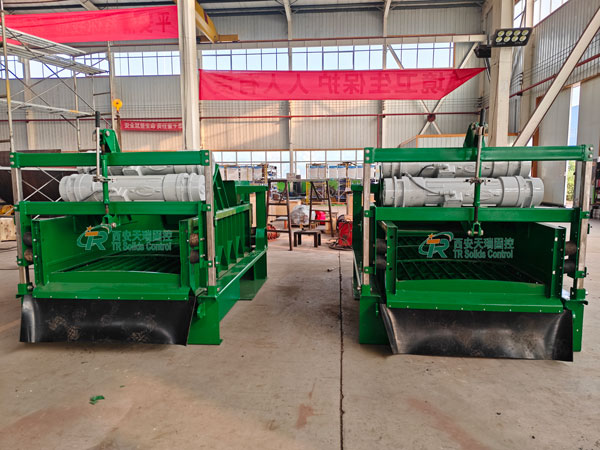
Technical Features:
Structure: Multi-layer screens (1-3 layers) + high-frequency vibrating motor (vibration frequency 1800-3600 vibrations/minute). Vibration forces solid particles to be discharged along the screen surface, while liquids pass through the screens into downstream systems.
Material: Screens are typically made of polyurethane or stainless steel, which are oil-resistant and wear-resistant (polyurethane screens have a lifespan 2-3 times longer than traditional metal screens). The body is typically constructed of corrosion-resistant carbon steel or stainless steel, suitable for high-salt and oil-rich environments.
Processing Capacity: Conventional models offer a capacity of 100-500 tons/hour, while dual vibrating screen combinations with a capacity exceeding 1000 tons/hour can be customized for large drilling sites.
Applications: Solids control in oilfield drilling fluids, pretreatment of oily sludge in petrochemical plants, and sand-water separation in municipal wastewater treatment plants.
Desander/Desilter: Secondary and tertiary solids control equipment, processing solids sized 44-74μm and 15-44μm, respectively. They can be combined to form a slurry cleaner.
Core Function: Separates sand particles with a particle size of 20-150μm (with higher precision than vibrating screens), particularly those in wastewater that are easily settled but difficult to screen. This prevents sand from accumulating and causing wear in downstream equipment (such as centrifuges and membrane modules).
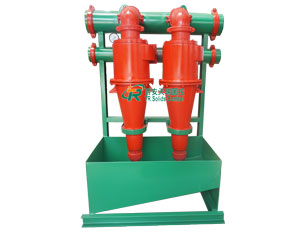
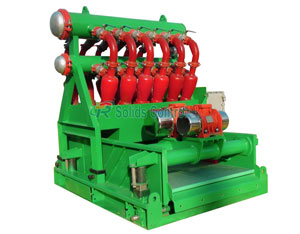
Technical Features:
Working Principle: Utilizing centrifugal force (inlet velocity 3-5 m/s, generating a separation factor of 500-1000 g), wastewater is spun at high speed along the inner wall of the cyclone. Sand particles, due to their high density, are flung toward the wall and discharged through the bottom "underflow outlet," while clear liquid flows out through the top "overflow outlet."
Structure: Single unit or multiple units in parallel (for insufficient processing capacity). Materials typically include wear-resistant cast iron or polyurethane (with a smooth inner wall to reduce sand abrasion). No power is required (driven by the sewage's own pressure), resulting in low energy consumption.
Separation Efficiency: Sand removal rate ≥ 95% (for particle size ≥ 50 μm), underflow sand moisture content ≤ 30%.
Applications: Fine solids control in drilling fluids, sand removal from wastewater in oil and gas gathering and transportation pipelines, and sand-water separation in municipal stormwater networks.
TRZCQ Series Drilling Fluid Vacuum Degasser: Installed after the vibrating screen, it removes harmful gases from drilling mud, protects downstream equipment (such as sand pumps and mud pumps), and maintains a stable mud density.
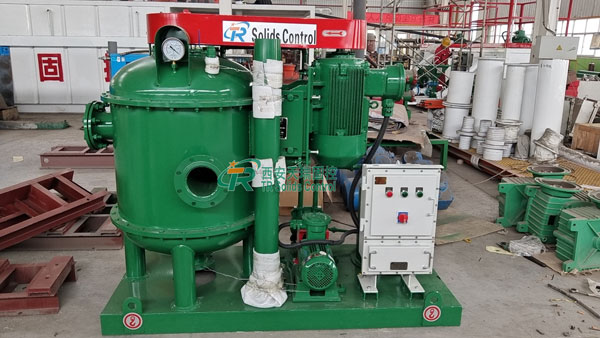
High-Speed Centrifuge: With a processing capacity of 4-15 m³/h, it separates solids with a particle size greater than 2 μm, resolving the problem of ultrafine particles that cannot be handled by cyclones and rapidly restoring drilling fluid properties.
Mud Agitator: Evenly distributes drilling mud, prevents sedimentation, and is compatible with all drilling fluid systems.
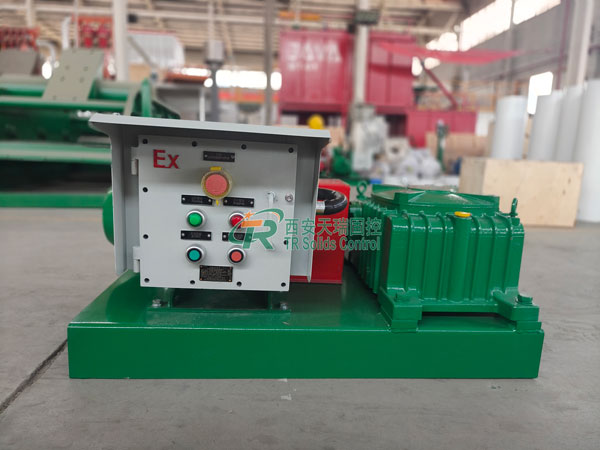
Jet Mixer: Simple in structure, it meets the drilling fluid weighting and configuration requirements of solids control systems for drilling depths of 1,500-9,000 meters.
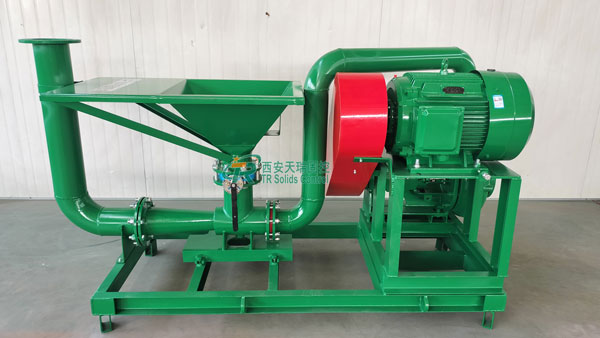
Sludge Dewatering Machine
Belt Filter Press: Dewaters sludge through a filter belt, offering high throughput but requiring backwash water. Suitable for low-concentration sludge.
Plate and Frame Filter Press: Intermittent operation produces a high filter cake solids content, but the filter cloth is susceptible to damage and has high maintenance costs.
Decanter Centrifuge: Continuous operation offers high separation efficiency, requires less flocculant, and has lower operating costs than a belt filter press.
Technical Features:
Working Principle: The high-speed rotation of the drum generates centrifugal force, forcing solid particles (with the highest density) to adhere to the inner wall of the drum and be pushed out by the screw pusher. Liquids (water/oil) are discharged through different outlets according to density.
Key Parameters: Processing capacity 1-50 m³/h (single unit), multiple units can be connected in parallel; Made of duplex stainless steel, resistant to high salt and acid corrosion; Pushing speed can be dynamically adjusted according to solids content.
Separation Performance: Solids content of treated wastewater ≤ 0.5%, sludge cake moisture content 70%-85% (suitable for direct transport), oil recovery rate ≥ 95% for oily sludge.
Applications: Oilfield oily sludge dewatering, petrochemical wastewater treatment, and chemical sludge reduction.
Sludge solidification equipment
Physical/chemical solidification systems: By adding solidifying agents (such as cement and lime), sludge is converted into a stable solid, minimizing the release of harmful substances and reducing the risk of soil and water pollution.
Pyrolysis treatment equipment: High-temperature decomposition of petroleum-based substances in sludge is achieved, reducing the solid-phase petroleum content to ≤2%, ensuring that the treated water meets discharge standards.
Cocurrent drying equipment: A drum and crushing unit are combined to rapidly dehydrate highly wet sludge (e.g., sludge with a moisture content of 96%). It is compatible with various heat sources, including coal and natural gas, and offers high thermal efficiency.
Sludge and wastewater treatment in the oil and gas industry requires a comprehensive consideration of technical feasibility, environmental compliance, and economic viability. Equipment selection requires a flexible combination of sludge characteristics (such as oil content, viscosity, and heavy metal content) and treatment objectives (discharge, reuse, or resource recovery). TR Solids Control manufacturers select a synergistic solution combining "reduction, resource recovery, and harmlessness" based on the company's scale and regional regulations.

Address: No.2 Hu·ochang Rood, Yangling District, Xianyang City, Shaanxi Province, China
Tel: +86-13186019379
Email: sales@trsolidscontrol.com
Contact: Mr.Li